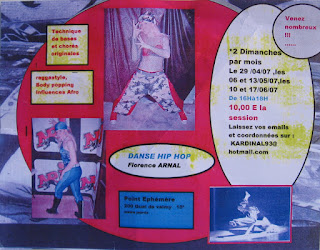The French have pills for everything. Cellulite issues? They’ve got a pill. Hair loss? They’ve got a pill. PMS-y crankiness? They’ve got a pill. Tanning? You’d better believe they've got a pill. I’d never even dreamed of a bronzer in pill form before arriving in France last summer – maybe there are some ambitious American companies trying to push tanning pills through late night infomercials, but here it’s nothing like that. For one, every pharmacist in the city sells them – for another, French people actually buy them.
Walking home on the rue des Petits Champs today, I felt like I was being bombarded by ads for capsules de bronzage. The windows of Monoprix are filled with pictures of a tanned woman holding a bottle of pills, the windows of every perfumerie and pharmacie host cardboard cut-outs of similar tanned women with their bottles of pills, and even the bio store was boasting a homeopathic alternative to the pills. Actually, the only place that wasn’t advertising these miracle pills was the Parisian equivalent of the As Seen on TV store at the Tacoma Mall.
I wandered into the Pharmacie mainly out of bored curiosity, but as I stared dumbfounded at the shelves upon shelves of options I was approached by the pharmacist. Unable to resist any longer, I asked him what he would recommend. He asked me a series of questions about my skin type and what I’d like to accomplish with my tanning pills – did I just want to prepare my skin for tanning, or was I also concerned about cellulite? If so, there’s the dual-action pill option – the amazing combination of chemicals and vitamins that claims to make you skinny and tan without any more effort than unscrewing the pill bottle each morning.
After about 10 minutes of skeptical (from my end) but earnest (from his end) conversation, we’d settled on the Oenobiol Solaire Intensif booster d’efficacité. This one will do nothing for my figure, but according to the pharmacist if I take it faithfully each day my skin will be more receptive to sunlight and will block harmful UV rays, my tan will be deeper and longer-lasting, and as a bonus, my eyes will be less sensitive to bright sunlight. Apparently.

This all sounds just completely insane to me, but I’m willing to try it – it’s mostly just vitamins anyway, so if nothing else, I might be a little healthier at the end of the two months. The thing that strikes me as odd is the fact that French pharmaceutical companies are able to manufacture and sell in huge quantities these way too-good-to-be-true “drugs,” but I guess it makes sense. Tanning is a real culture here – everybody does it, from the fashion crows to businessmen to stay-at-home moms to university students. The tanning parlors operate in compliance with European standards, which prohibit minors (teenagers under 18) from tanning, and offer coffee and tea, massages and other spa treatments to clients.
As harmful as extra UV exposure may or may not be, the tanners en cabine are much more likely to be satisfied with a nice dark tan than the pill-poppers – unless they’re one and the same. The pills de bronzage were available throughout the fall and winter, but weren’t as heavily advertised until now – the beginning of bikini season. The thing is, if people are taking these pills at the same time that the weather is becoming steadily warmer, the skies are becoming steadily sunnier, and they’re spending more and more time outdoors in the warm spring weather, how can they tell if the pills are having any effect at all? People get tanner in the summer – it’s just one of those facts of life, and while a pill may make you feel a little tanner, I can’t help but be skeptical of its actual properties.
Listed ingredients (translated from French): Rapeseed oil, modified glucides (coating agents), glycerin (reinforcing agent), tomato extract, carrageenan (gelling agent), colloidal silica (thickener), extract of Dunaliella Salina (a kind of pink micro-algae), vitamin E concentrate, extracts of vegetables rich in xanthophyll, rice flour (diluent), brown iron oxide (dye), disodium phosphate (acidity corrector), red iron oxide, yellow iron oxide, titanium dioxide (dye), selenium, microcristalline cellulose (dilutor), traces of lecithin and soy.















































